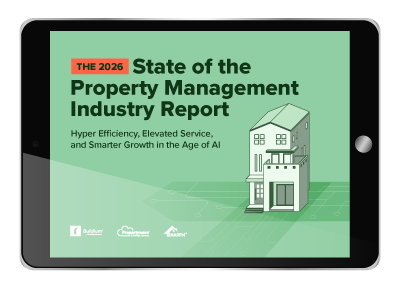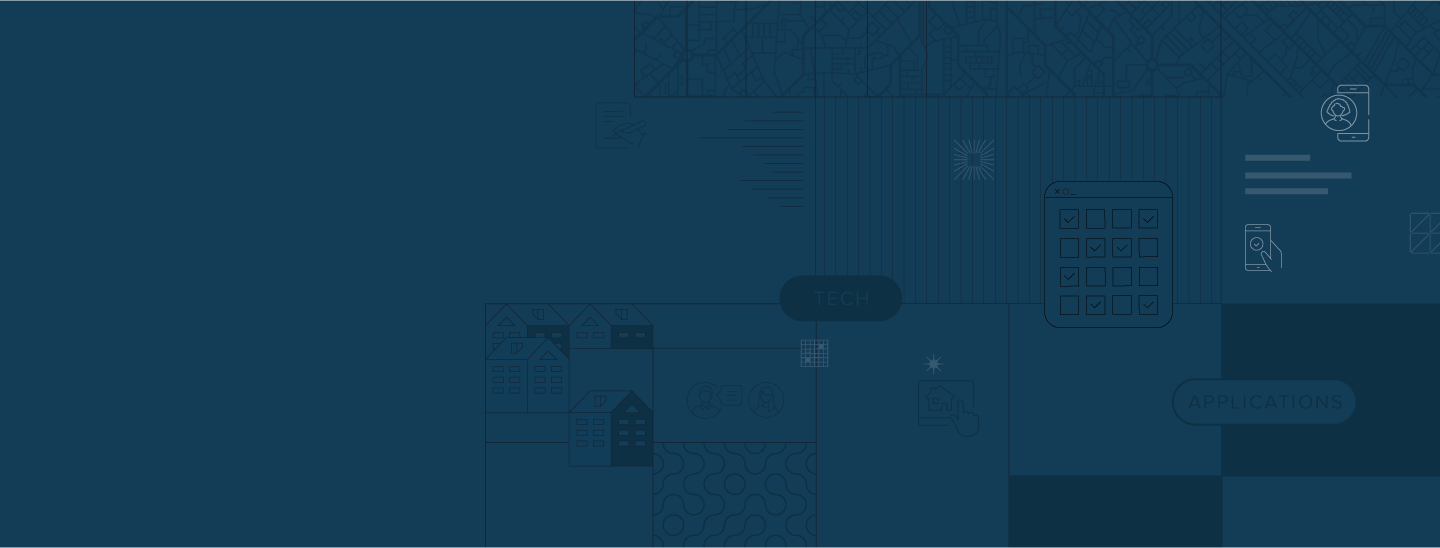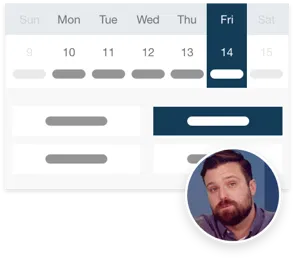Property management has changed fast.
Start your free trial today!
Try Buildium for free for 14 days. No credit card needed.
Start Your TrialManaging rentals used to mean phone tag, hopping from location to location, and endless coordination. Today, tenants expect instant responses. Owners want real-time updates. And property managers need tools that help them keep up without burning out.
In this post, we’ll walk through specific ways technology in property management helps you simplify tasks, stay organized, and keep both tenants and owners happy, painting a practical picture of what different proptech tools look like in action.
1. Communicating with Tenants: From Delays to Instant Updates
Before: Missed Calls and Sticky Notes
Remember when tenant communication meant voicemails, paper notes, and chasing people down? Messages got lost. Responses took too long. Everyone ended up frustrated.
Now: Organized, Instant, and Easy to Track
Today, technology in property management bring all tenant conversations into one place. Whether you’re sending a quick message, replying to a maintenance question, or sharing documents, everything stays organized and easy to find.
Scenario:
A tenant submits a maintenance request through a mobile portal at 7 p.m. They instantly receive a message confirming the request and sharing next steps. The system notifies your maintenance team automatically. Everyone stays in the loop—no extra effort.
Takeaway:
Quick, reliable communication builds trust and saves time—for you and your tenants.
2. Handling Maintenance: Staying Ahead Instead of Catching Up
Before: Paperwork Orders and Missed Appointments
Maintenance used to be reactive. Something broke, and you scrambled to fix it. You called vendors one by one. Follow-ups slipped through the cracks. Preventive work rarely happened on time.
Now: Track Requests, Schedule Ahead, and Keep Everyone Updated
Digital systems now let you log issues, assign tasks, and monitor progress in real time. You can also schedule preventive maintenance so you’re not waiting for problems to appear.
Scenario:
A tenant reports a leaky faucet through the online portal. The system logs the request, notifies a plumber, and keeps the tenant updated. At the same time, your system reminds you that HVAC servicing is due next week and sends out the work order.
Takeaway:
Fix problems faster—and stop some of them from happening at all.
3. Collecting Rent and Managing Finances: Less Stress, More Consistency
Before: Late Checks and Manual Spreadsheets
Rent day used to mean waiting for mailed checks, making trips to the bank, and updating ledgers by hand. Mistakes were easy to make, and follow-ups took time.
Now: Automatic Payments and Real-Time Balances
With digital rent collection, tenants can pay online or set up auto-pay. You can see who’s paid (and who hasn’t) right away. Financial reports update automatically and help you spot trends or issues quickly.
Scenario:
Tenants get automatic reminders a few days before rent is due. Most pay through the app. Late payments trigger a friendly nudge without you having to lift a finger. Meanwhile, your system updates your income report in the background.
Takeaway:
Spend less time chasing rent and more time focusing on the big picture.
4. Leasing and Marketing: Shorter Vacancies, Simpler Processes
Before: Signs, Phone Tag, and Piles of Paper
Leasing was time-consuming. You printed flyers. You answered dozens of calls. Applications took days. Signing leases meant scheduling in-person meetings and organizing paperwork.
Now: Online Listings, Digital Applications, and E-Signing
Today, you can post a listing once and push it to multiple sites. Prospective renters can view listings, schedule tours, apply, and sign—all from their phones. Property managers can set up that kind of seamless experience and manage the entire leasing process—from listing to move-out—with one set of tools.
Scenario:
A unit becomes available. Your system automatically posts it online with photos and a virtual tour. A prospective renter applies, gets screened, and signs the lease—all in 48 hours. The place is ready before the next rent cycle begins.
Takeaway:
Cut vacancy time and make the process easier for everyone involved.
5. Using Data to Make Better Decisions
Before: Guesswork and Gut Feelings
Without good data, you had to rely on memory or spreadsheets to decide what to charge, when to renew a lease, or how to spot underperforming properties. It worked (for the most part) but left room for error.
Now: Dashboards That Show You What’s Really Happening
Technology brings together rent history, maintenance trends, occupancy rates, and expenses. Dashboards make it easy to track performance and make smart decisions without digging through paperwork.
Scenario:
You notice a building has a higher vacancy rate than others. Your dashboard shows that its rent is priced above similar properties. You adjust the rate, and occupancy improves within a month.
Takeaway:
Stop guessing. Let the numbers help you make informed choices.
6. Staying Organized with Compliance and Recordkeeping
Before: Missed Deadlines and Disorganized Files
Keeping track of inspections, lease expirations, and local regulations took serious effort. When something fell through the cracks, it could lead to fines—or worse.
Now: Automated Reminders and Secure Digital Files
Digital systems now send you reminders for upcoming tasks, store documents in the cloud, and log every update or change. This keeps you ready for audits, renewals, and everything in between. You can even run all your accounting and tax prep operations using the same platform.
Scenario:
You get a reminder that lease renewals are coming up in 45 days. The system drafts renewal letters and sends them to tenants for review. A week later, your compliance checklist shows all inspections for the month are completed and logged.
Takeaway:
Stay on top of your responsibilities without digging through filing cabinets or setting a dozen calendar alerts.
The Bigger Picture: Why Property Managers Are Going Digital
Adopting technology doesn’t mean turning into a robot. It means spending less time on repetitive tasks and more time doing the work that really matters—building relationships, solving problems, and growing your business.
With technology in property management, you can:
- Handle more units without more staff
- Respond faster to tenants and owners
- Keep records clean and accessible
- Make better decisions with real data
- Avoid last-minute scrambles
And perhaps most importantly, you’ll spend more of your day working on your business—not just in it.
Don’t Lose the Human Touch
Even the best technology won’t replace kindness, patience, or experience. A friendly message, a quick check-in, or a thoughtful response still goes a long way with tenants and owners.
Use technology to handle the background work so you have more time—and energy—for people.
A Platform that Combines the Benefits of Technology in Property Management
Whether you manage two doors or 2,000, technology in property management can help you save time, reduce stress, and deliver better service. You don’t have to adopt everything all at once. Start small, stay consistent, and build from there.
One platform that combines a lot of the benefits we’ve talked about in this post is Buildium, property management software that can help you with almost all your day-to-day and long-term strategic tasks. You can give it a spin for free with a 14-day trial or opt for a guided live demo.
Remember, property management is still a people-first business. But, when you add smart tools into the mix, your team becomes more capable, your tenants feel more supported, and your business grows faster and more sustainably.
Read more on Growth


